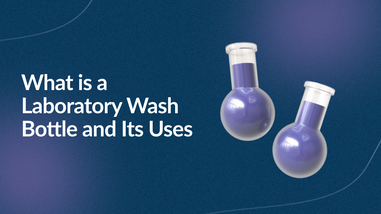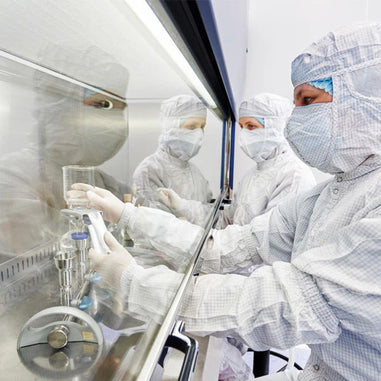- No products in the cart.
Most people think of q-tips or a cotton ball when they hear the word, ‘swab’. But swabs are so much more advanced and complex than that general notion. Swabs are used for general cleaning but they are also used as precision tools by lab technicians to perform very meticulous applications. The swab used is based on the compatibility of the application and the general properties of the swab.
Selecting A Swab For General Cleaning
Cotton-tipped swabs are the most common swab. The tips are made of pharmaceutical-grade spun cotton fibers. They are soft, absorbent, safe, and the least expensive. They are easy to acquire and perform reliably and consistently as a one-time use swab. Cotton-tipped swabs do leave behind fibers and are best used in non-critical scenarios because of linting. This economical and readily available cotton swab is designed for general cleaning applications.

Selecting A Swab For Precision Cleaning
Precision cleaning requires swabs that are designed for higher performance such as more complex and meticulous tasks. Fortunately, some swabs have been designed and built specifically for this. Swabs are very effective at removing particles, dust, and contaminants from a precise spot, recess, or crevice.
Particulate Removal
In particular, polyurethane foam swabs work best when it comes to precision cleaning. These swabs are soft and pliable so that they can conform to recesses and crevices. Polyurethane polymers are tough which makes the foam tip tear-resistant. The open-cell polyurethane foams capture and hold the particles. Polyurethane foam will not leave any fibers behind.
Contamination Removal
Light Contamination
In precision cleaning, surfaces being cleaned are delicate and the contaminants themselves are usually light. The solvents used are typically less aggressive as well. In cases like this, swabs with either soft delicate edges such as small soft sealed foam swabs or swabs with no edges such as wrapped foam swabs are ideal to use.
Heavier Contamination
Harder to remove soils require stronger solvents and scrubbing. Unreticulated foam or knitted polyester should be the choice here because they are chemically resistant and are constructed with hardier materials. Unreticulated foam inhibits absorption and the foam is much tougher and abrasion-resistant. Knitted polyester is also very robust and resistant to abrasion when scrubbing on rough surfaces or crusty contaminants. This would shred foam.
Precision Cleaning Selection Summary
Here is a step-by-step guide for choosing the best swab for precision cleaning.
1. By identifying the particles or contaminants that need to be removed, you can use the process of elimination to narrow down the options for the best swab to use.2. Consider the surface area being cleaned. Is it sensitive to any solvents or static? Is the surface rough or abrasive or are the contaminants crusty?
3. Choose the cleaning solvent, if any. Find the proper balance of a solvent that is effective enough to remove the particle or contaminant but will not damage what’s being cleaned. In other words, make sure that the swab and solvent and compatible with the item being cleaned.
Remember:
For particles and light contamination, use a gentle solvent such as light alcohol.
For heavier contamination, use a more aggressive solvent for wax, adhesives, and heavy grease.
4. Select swab.For gentle cleaning solvent, use foam for one-time use, low cost, conformity, and softness or polyester for more strength and cleaning capabilities.
For an aggressive cleaning solvent, choose polyester swabs since they are chemically resistant.
For rough or abrasive surfaces, also use polyester since it is a stronger swab.
There are also translucent blue handle ESD swabs for ESD-sensitive devices.
Remember to match the swab shape and size to the area being cleaned.
Sampling Techniques For Cleaning And Validation
A sampling technique for cleaning and validation is a process of rubbing a swab on a surface to collect any contaminants. The contaminant is then removed from the swab and analyzed. This technique is mostly used in the pharmaceutical industry to prevent cross-contamination.
The best swab to use for this sampling technique is a swab made with polyester. Polyester is specifically designed to absorb contamination from a surface and then release the contamination for analysis. Polyester is produced with low excess residue which means there is no contamination in the swab from production which creates an optimal environment for precision and accuracy. This contamination-free process continues through the packaging process.
You can see from the swabs used for general cleaning, precision cleaning, contamination removal, and sampling techniques for cleaning and validation that swabs are designed on purpose for specific tasks. They are designed to be as efficient as possible based on the task. Swabs are one of the most common and useful tools used by skilled technicians. Swabs have evolved tremendously from the traditional q-tips and cotton balls.
Lab Pro offers a large variety of cleaning swabs. For over 40 years, Lab Pro Inc. has been committed to delivering the highest quality chemicals, lab equipment, distance learning kits, lab supplies, and cleanroom PPE apparel to medical device companies and laboratories worldwide. To learn more, visit the biggest Lab Supply showroom in California, or contact us online or at 888-452-2776.












































